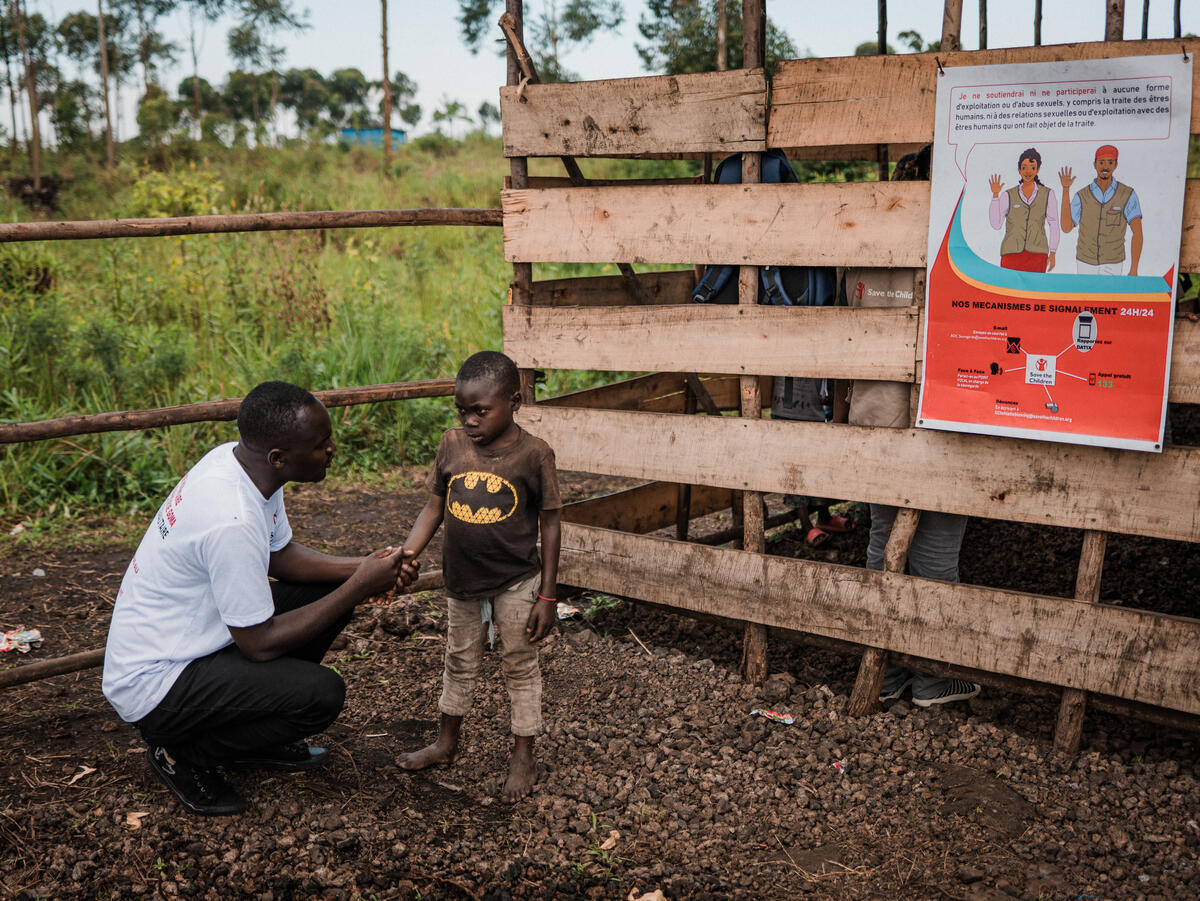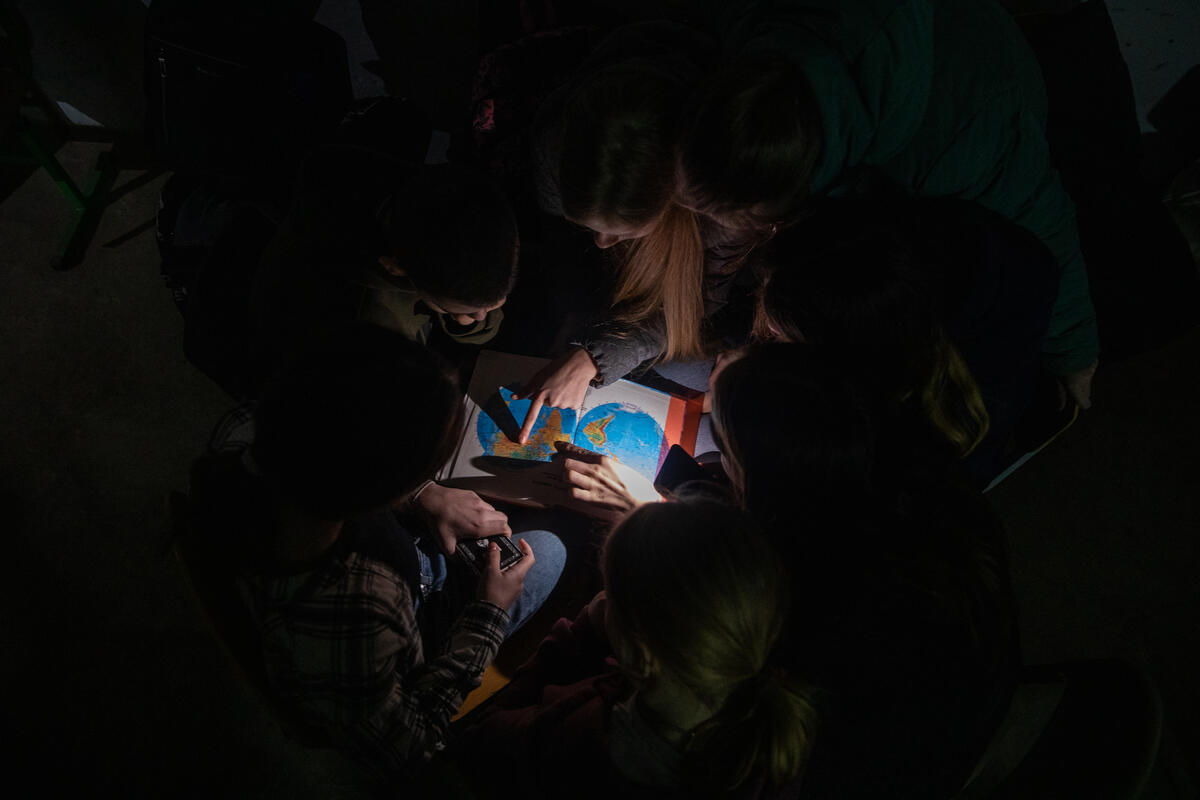Stop the War on Children – Children in Conflict 2022
“All wars, whether just or unjust, disastrous or victorious, are waged against the child.”
Our founder, Eglantyne Jebb, first said this more than 100 years ago, but today her words resonate with even greater urgency.
Five years on since our first Stop the War on Children report, more and more children find themselves affected by conflict, with devastating consequences for their lives and their futures.
While the latest report looks at conflict in 2022, it is written in the shadow of catastrophic events today in the occupied Palestinian territory, the Democratic Republic of Congo (DRC), and Sudan. Thousands of children in Gaza have been killed and injured. The siege of Gaza has deprived Palestinian children of the basic means of survival, including food, clean water, and fuel to run hospital generators, ambulances and desalination plants.
Children have been killed and maimed in the West Bank and Israel, and dozens of Israeli children were taken hostage in Gaza. And in Sudan, the escalation of conflict in 2023 has now seen more than seven months of unabated fighting, with more than 9,000 people killed.
The war on children in 2022 by the numbers

In 2022, about 468 million children – one child in six – were living in a conflict zone; a 2.8% increase from 2021.
Based on our analysis, the Democratic Republic of Congo was the worst conflict-affected country to be a child in 2022, followed by Mali, and then Myanmar.
While Africa was the continent with the highest number of conflict-affected children in 2022, the Middle East had the highest proportion of children living in conflict zones of all regions – with one-third of all children living in conflict zones.
The number of verified cases of children recruited and used by armed forces and groups increased by 20% from 2021 to 2022, totaling 7,610 children.
Children continue to be most affected in the places where they should be safe. The number of recorded attacks on schools and hospitals increased by 74% in just one year – from 1,323 in 2021, to 2,308 in 2022.
Grave Violations in 2022 by the numbers

To better monitor, prevent, and end attacks on children living in conflict-affected areas, the United Nations has identified and condemned six grave violations – which cover the core areas of how conflict affects children.
In 2022, 27,638 grave violations against children were verified, the highest ever since reporting started in 2005. That works out to an average of 76 violations per day. They included:
The Killing and Maiming of Children
- In 2022 Ukraine was the country with the highest number of children killed or maimed, with 477 children killed and 909 children maimed. The second highest was in the occupied Palestinian territory, where 1,134 children were killed or maimed, most of them wounded in Gaza.
- 2022 also saw the largest number of children killed and maimed in DRC since grave violations began being tracked in the country. Most of the 731 children reported under the grave violation were killed, an almost 50% increase from 2021.
Recruitment and Use of Children by Armed Forces
- While fewer than the record high of 8,595 cases reported in 2020, the recruitment and use of children by armed forces was one of the top two reported grave violations in 2022.
- This is to some extent a result of the rise in reported cases in Afghanistan, from 58 children recruited in 2021 to 548 in 2022, as well as a 30% increase in Syria and a 75% increase in Mali.
Abduction of Children
- The reported number of children who were abducted in 2022 increased again from 3,460 cases in 2021 – a record year – to 3,983 cases in 2022.
- DRC continued to have the highest reported number of children abducted, totaling 1309 in 2022. This is among the highest number reported under this violation in any conflict country since reporting started in 2005.
Sexual Violence against Children
- The highest verified numbers of cases of sexual violence against children in conflict were reported in DRC – with 484 cases – and Somalia – with 221 cases. However, these figures did decrease significantly from 2021 to 2022; by 13% in DRC and almost 30% in Somalia.
Denial of Humanitarian Access
- It is important to note that unlike the four other violations covered so far, an incident of denial of humanitarian access could impact thousands of children’s access to basic services and protection.
- The occupied Palestinian territory had the highest number of incidents of denial of humanitarian access, with 1,863 recorded denials in 2022; almost all occurred in Gaza and were due to denials of permits to seek medical care outside of Gaza.
- While lower than the previous four years, the number of verified incidents in Yemen was the second highest figure across conflict settings in 2022 at 901 reported incidents.
Attacks on Hospitals and Schools
- The number of recorded attacks on schools and hospitals increased by 74% in 2022. At 2,308 incidents, this is the highest number of incidents verified since the record year of 2014.
- This increase can largely be attributed to the high number of incidents – 781 – in Ukraine, which constitutes one-third of the attacks on schools and hospitals verified across all conflicts in 2022.
- The increase was also steep in many other contexts, including in Myanmar, with 227 incidents, a significant increase from 80 in 2021.
The suffering of children in armed conflicts challenges the progress we have made as a global community over the last decades. It is an unforgivable crisis that violates children’s rights and takes away their lives.
We demand that the war on children stop, and accountability be enforced for crimes committed against children trapped in conflicts; crimes that are perpetrated even as world leaders talk or – worse – remain silent.


